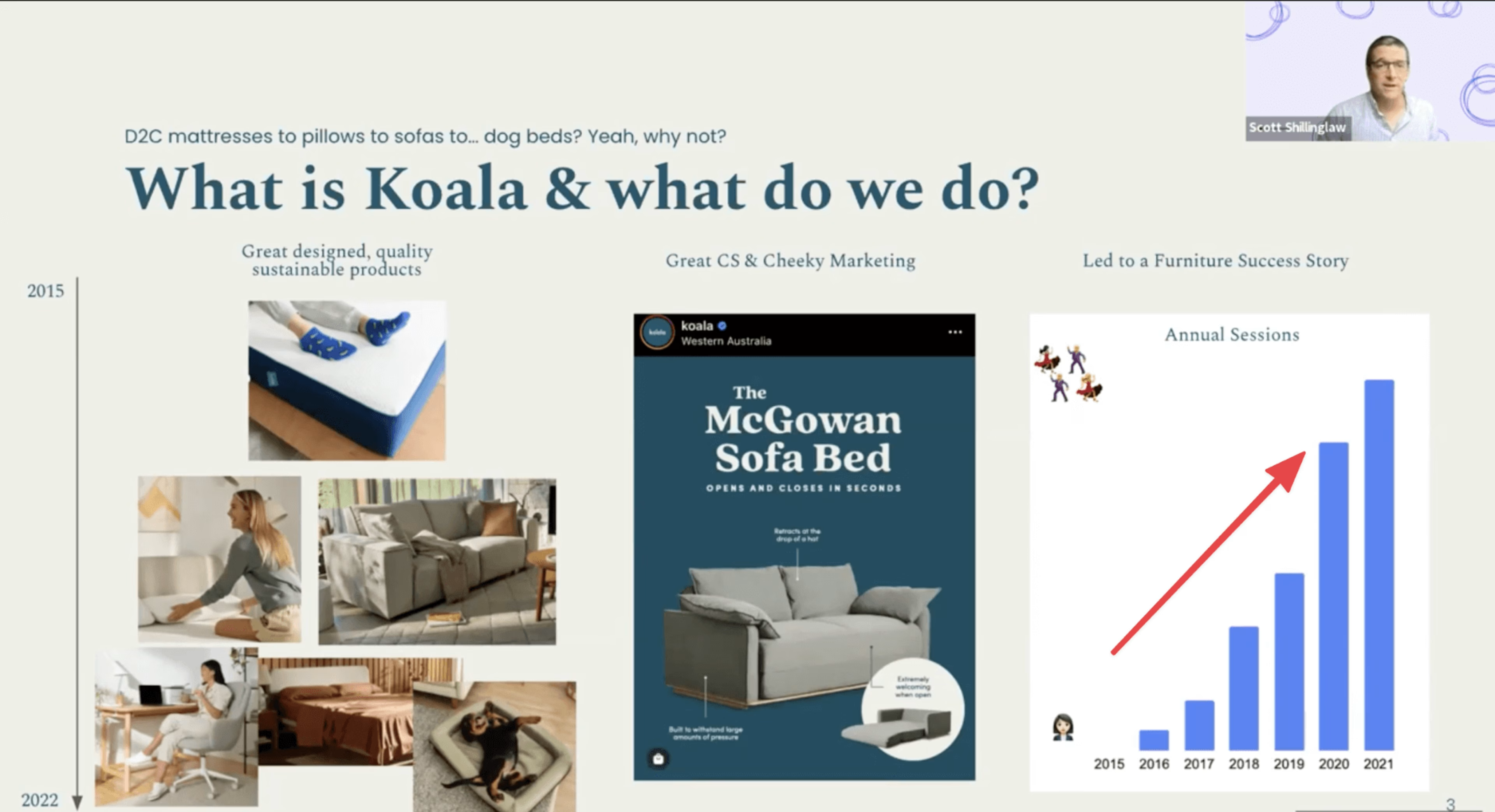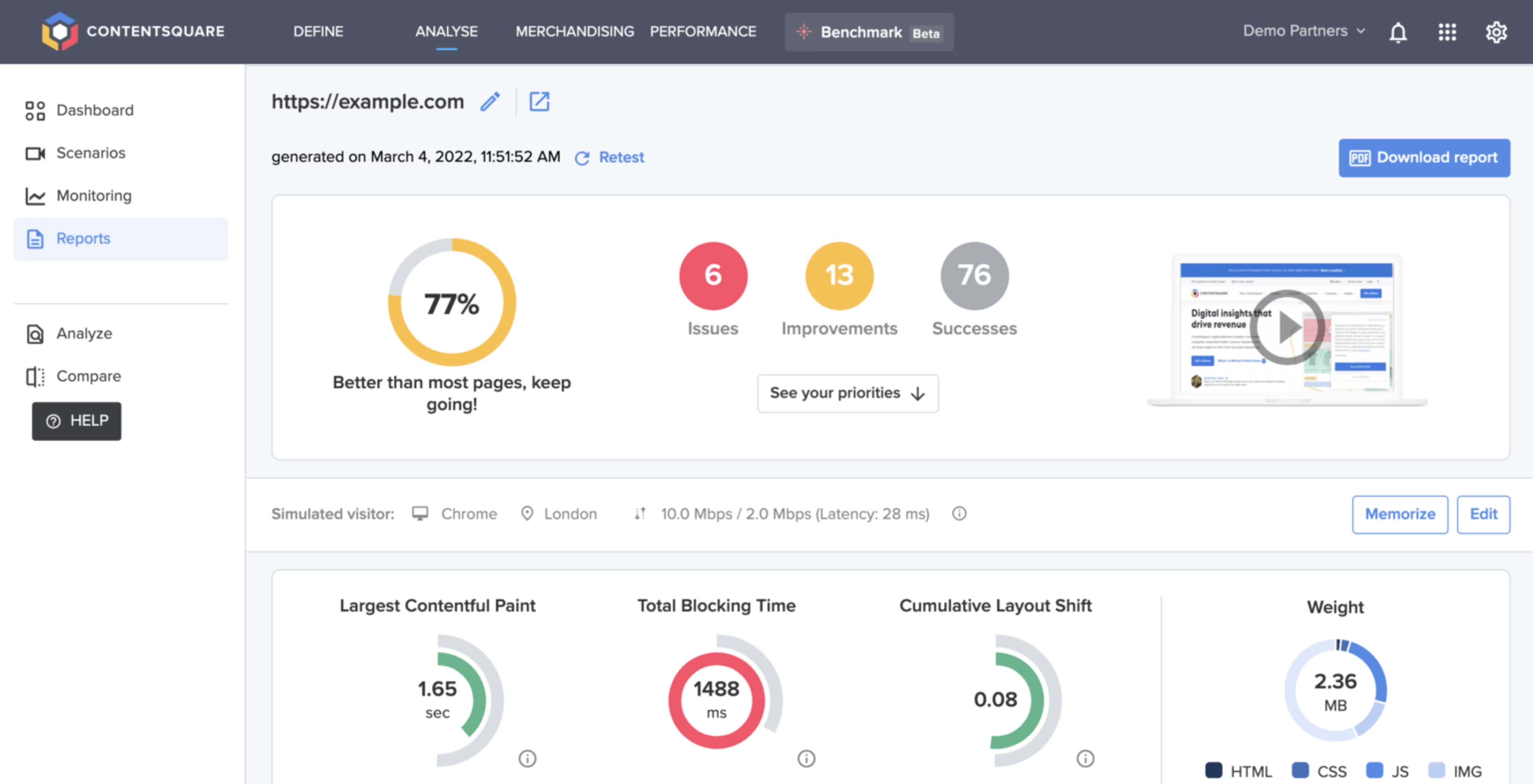How to start your digital transformation journey? What should you take into account? And how to navigate the transition from a scrappy start-up to a mature scale-up?
At our recent DX: LIVE event, Scott Shillinglaw, Senior Digital Product Manager at international direct-to-consumer (D2C) furniture company Koala, shared insight into their digital transformation journey. He reflects on key teachings instilling a data-led culture, mistakes the team made in hindsight, and how data from Contentsquare’s digital analytics platform helped the team prioritize decisions.
How to navigate your digital transformation journey
Here are our four key takeaways from Scott’s talk on their digital transformation journey:
1. Growth and decision-making strategies change as your company scales
When Koala began operations in 2015, the team emphasized a flexible approach to decision-making towards ideas and projects. They seized growth opportunities and prioritized speed-to-market over perfection. This approach led to exponential growth in their first few years of operations.
Over time, this scrappy approach created technical issues. The technical team had not yet invested sufficient time in documentation, and tracking became confusing. Quick decisions without optimization led to accumulated technical debt.

As a result, more time was spent fixing problems and responding to issues, reducing the time available to build and design longer-term solutions for customers. They also noticed increasing opportunity cost and business impact with mistakes as the business scaled.
Koala’s growth pains began in 2020. After a number of deployment failures and time spent fixing problem-ridden software, it became clear they needed to upgrade their tech stack and move away from Shopify, where they had started. In addition, their decision-making process needed to be tweaked.
With a goal to build a foundation for analytics, Koala invested time and resources to get its website tracking architecture right. They implemented in-house tracking events for the critical path, supplementing with Contentsquare’s digital experience platform to monitor the user journey and track online behaviours.
2. Include perspectives from cross-functional teams when solving issues
The team noticed a drop in conversion rate performance after launching their new website. However, there were many contributors to the issue, and they needed to scope out the problem and identify quick wins.
Koala organized cross-functional teams comprising technical, product, creative and commercial team members to scrutinize the performance of each website page.
To close the performance gaps after migrating from Shopify, the cross-functional team analyzed performance data from critical path areas like checkout completion, mobile-specific features, and product landing pages for quick wins and to prioritize issues for fixing.
“Data analysis is key, otherwise you’ll just be opinions lost in the void” – Scott Shillinglaw, Senior Digital Product Manager
3. Thoroughly scope and adjust for gaps when changing providers
Koala underestimated the speed benefits inherent to Shopify’s platform while migrating to their new tech stack. Contentsquare’s Speed Analysis saw a decrease in their Largest Contentful Paint (LCP) metric on mobile after the new website was launched. This metric measures the loading time of web content on mobile devices and is a key user experience and SEO ranking factor.
Though they could resolve the issues and return to their previous rankings, Scott reflects they could have avoided the issue if they had spent more time thoroughly evaluating and scoping out functionality gained and lost from changing website providers.

Image: Example of Contentsquare Speed Analysis tool
4. Question and validate problems or assumptions with data and analysis
It’s tempting to jump from problem to solution when faced with an issue, especially when complaints come from customers or public channels. However, Scott shares that quick action may not always be the best option.
Example 1: Koala’s welcome flow popup was too ‘spammy.’
Koala received feedback from social media that their on-site welcome flow pop-up was too intrusive. The team jumped into solution mode, reducing the frequency of the pop-up and pushing the solution live. However, it turned out that the original approach worked better, and reducing the pop-up frequency had a negative impact on customer sign-ups and revenue.
To prevent similar situations from happening, Scott suggests taking the time to validate the problem before going into solution mode, and developing an organizational culture where people could analyze a problem before diving into problem-solving.
Example 2: Broken link to reviews reported as a bug, analysis revealed a minority of users used the feature
Koala’s fixes to improve site speed included the lazy loading of images, which defers the loading of images on a page instead of loading them up front. This meant that the anchor link on the review summary on top of the page linking visitors to customer reviews would no longer work properly.
While the broken feature was reported as a bug, a quick check on Contentsquare’s Customer Journey Mapping tool showed only 0.04% of users used that specific feature since launch.
Based on the low usage data, the team decided it would be better to prioritize their time elsewhere and remove the feature entirely rather than fix it. Having solid data to justify decisions also helped in proactively explaining the basis of their decision to stakeholders.
Scott’s 4 tips for digital transformation success
1. Stay flexible and adapt as your company grows: Growth presents the opportunity to shape your organizational culture to prepare yourself for the next stage of growth.
2. Validate opinions with data: Use data to inform opinions and decisions. Data gives you a more solid base for decision-making and helps justify your decisions to your key stakeholders.
3. Challenge the validity of problems: Is that bug or complaint you’re hearing really a problem? Take the time to validate a problem before jumping into solution mode.
4. To build a data focus, everyone in the business must contribute: Seek input from cross-functional teams. Train everyone in the organization to use your analytics frameworks and tools.
Fernando is Product Marketing Director for Verticals at Contesquare. With extensive experience in Product Management in different industries (FSI, T&H, Power Utilities, Public Sector), he’s passionate about the impact that traditional sectors have on our daily lives. Fernando is a firm believer that digital democratizes the access and scalability of the services that create a better and more inclusive society. He joined Contentsquare to empower our vertical customers in making that happen.